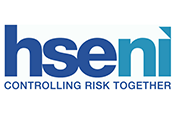Control of major accident hazards (COMAH)
Additional responsibilities for upper tier COMAH-regulated sites
If you operate a site covered by the Control of Major Accident Hazard (COMAH) Regulations, you must meet requirements for using and storing dangerous substances. See COMAH regulated site requirements.
If you operate a site where the quantities of dangerous substances you use or store meet or exceed the upper thresholds in the COMAH Regulations, you will be classed as a top tier site. For more information about the different tiers, see does COMAH apply to my business? Upper tier operators must meet some additional requirements.
Submit a safety report
You must submit a safety report to the competent authority (CA) - the Health and Safety Executive for Northern Ireland (HSENI) and the Northern Ireland Environment Agency (NIEA). Your safety report must demonstrate that you have put in place a major accident prevention policy (MAPP) and a safety management system to implement the policy.
You must review the safety report:
- at least every five years
- to account for new facts or new technical knowledge
- if you change your safety management system
You must tell the CA about these reviews, even if you don't make any changes to the safety report.
For new top tier installations you must submit a safety report prior to construction and before operating with dangerous substances.
You must tell the CA immediately if you make any changes to your safety report.
Prepare an internal emergency plan
You must prepare a separate internal emergency plan before your business starts operations. This must give details of what you will do in the event of an accident. It should include:
- names or positions of people who will put emergency procedures into action
- names or positions of people who liaise with the HSENI for the external emergency plan
- details of the procedures for contacting the CA and other local emergency services
- details of events that may cause a major accident and actions that will be taken to avoid them
- a description of the safety equipment and resources available to deal with an incident
- details of how the risk to people on-site is minimised
- details of how the risk to the environment is minimised
- actions to be taken if an incident warning is issued
- arrangements to inform the HSENI of an incident, so that the external emergency plan can be put into action
- details on how staff are trained to deal with emergency situations
- arrangements for helping to minimise off-site impacts of an incident
When preparing your emergency plan you should liaise with the CA and other relevant agencies, for example the local fire, ambulance and police services and local health and social services board. They can advise on possible effects to areas outside your site.
Test and review your internal emergency plan at least every three years and revise it as necessary.
Inform local people
You must provide information about your activities to local residents, workers at other premises and every school, hospital or other establishment serving the public, which may be affected by a major accident on your site. This should include:
- the name and address of your business
- the position of the person responsible for keeping local residents and businesses informed
- confirmation that your business needs to comply with the COMAH Regulations, and that you have notified and submitted a safety report to the HSENI
- a brief explanation of the activities undertaken at your site
- what dangerous substances are on your site, using common names where they exist, and their dangerous properties, eg explosive or flammable
- information on the hazard posed by these dangerous substances to people and the environment, and the safety measures in place to control the risk of an accident
- details of how people will be informed and the actions to take if a major accident occurs
- confirmation that your business is required by law to be prepared for major accidents, and to liaise in particular with the emergency services to deal with major accidents and minimise their effects
- making reference to your external emergency plan which should include advice to people to co-operate with instructions from the emergency services in the event of an incident
- NIEA Helpline0300 200 7856
